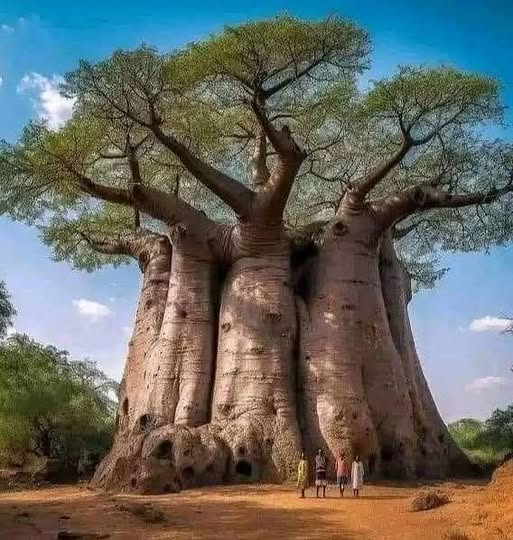The Baobab Tree: Africa’s Ancient Tree of Life
The baobab tree, scientifically known as Adansonia digitata, is a remarkable species native primarily to Africa, with some populations also found in parts of Australia and Madagascar. Often called the “Tree of Life,” the baobab stands out not only for its distinctive, massive trunk and unusual silhouette but also for its extraordinary longevity and multifaceted role in ecosystems and human cultures.
Origins and Botanical Significance
The baobab’s scientific name honors the French botanist Michel Adanson, who first recorded this extraordinary tree during his travels in West Africa in the 18th century. Adanson’s documentation helped introduce the baobab to the scientific world, and since then, it has become a subject of fascination for botanists, ecologists, and anthropologists alike.
Physical Characteristics and Longevity
Baobabs are easily recognizable by their thick, swollen trunks that can reach diameters of up to 10–15 meters (30–50 feet). These trunks act as natural water reservoirs, storing thousands of liters of water during the rainy season. This adaptation allows the tree to survive the harsh, drought-prone environments where it typically grows. Some baobabs are estimated to live for over 2,000 years, with a few specimens believed to be closer to 6,000 years old, making them some of the longest-living trees on Earth.
The tree’s bark is smooth and shiny, ranging from gray to reddish-brown, and has the unique ability to regenerate after being stripped, a trait that has allowed humans to harvest it sustainably for centuries. The baobab’s branches, which may look like roots sticking up into the air, have earned it the nickname “upside-down tree.”
Ecological Importance
The baobab plays a crucial role in its environment. Its flowers bloom at night, attracting bats and other nocturnal pollinators, which are essential for its reproduction. The fruit, often referred to as “monkey bread,” contains a dry, powdery pulp rich in nutrients such as vitamin C, calcium, potassium, and antioxidants.
Many animals rely on the baobab for food and shelter. Elephants, baboons, and various bird species feed on its fruit, leaves, and nectar, while the hollow trunks provide refuge for insects, birds, and small mammals.

Human Uses and Cultural Significance
For countless generations, the baobab has been integral to the livelihoods and traditions of African communities. Its fruit pulp is consumed fresh or dried and powdered for use in beverages, jams, and nutritional supplements. The leaves, rich in vitamins and minerals, are used in cooking and traditional medicine to treat ailments such as fever, diarrhea, and inflammation.
The tree’s bark is harvested for making rope, mats, and cloth without killing the tree, demonstrating a sustainable use of natural resources. Moreover, baobabs are often central to social and spiritual life, featuring prominently in folklore, proverbs, and ceremonies. They symbolize endurance, wisdom, and connection to ancestral spirits.
Conservation and Challenges
Despite its resilience, the baobab faces threats from climate change, deforestation, and land-use changes. Some ancient baobabs have shown signs of decline in recent decades, prompting scientific studies to understand the causes and protect these natural monuments.
Efforts to conserve baobabs include habitat protection, sustainable harvesting practices, and reforestation projects. Additionally, increasing global interest in the baobab’s nutritional and medicinal benefits has led to new economic opportunities for local communities through baobab product commercialization.
Conclusion
The baobab tree is much more than a striking natural wonder. It is a living archive of ecological adaptation, cultural heritage, and survival against the odds. As the “Tree of Life,” it continues to nourish and inspire, reminding us of the intricate bonds between nature and human civilization. Protecting this ancient giant is not only a matter of preserving biodiversity but also safeguarding a vital resource that supports millions of lives.



